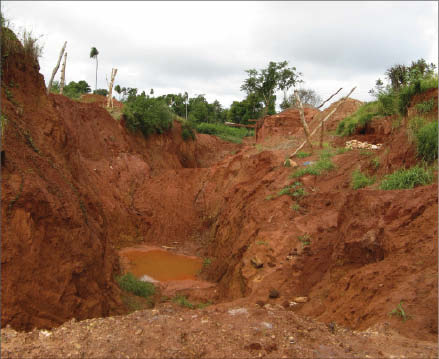Instead of the pomp normally associated with a new mine opening, Latin American Minerals (LAT-V) dashed investors’ hopes of any ceremonies on Feb. 1 by announcing that it was suspending operations at what was set to become Paraguay’s first modern gold mine.
The extreme measures came after local groups, made up largely of artisanal miners, blocked off entry to the Independencia Mine at the Paso Yobai project and scuffled with some of those in attendance at what was to be an opening ceremony.
The root of the protest was said to be the ire that local miners felt towards the processing plant being built by Latin American, as it would spell the end of their small-scale operations. The company has also been accused of only hiring artisanal miners temporarily and mining gold without properly declaring it – charges the company denies.
A day later Latin American management went on the offensive and attempted to clarify the situation from their perspective. Judging by the market’s reaction, they did a decent job of it as, after falling 22% to 21¢ on. Feb. 1 – the day news of the suspension was released – the company’s shares bounced back on Feb. 2 and climbed 42% to finish the day at 30¢ on 616,000 shares traded.
Latin American’s chairman, Richard Boulay describes the initial reports out of Paraguay as erroneous, chiefly because they emphasized violence at the project and painted a picture of an acrimonious relationship between locals and the company.
Boulay, however, says the violence was limited to a journalist getting “roughed up” and his car’s windows smashed after apparently asking too many probing questions of the protestors.
As for company relations with locals, Boulay says the heart of the matter is that local small-scale miners don’t want Latin American Minerals, or any company for that matter, to hold mineral rights on one small section of the greater Paso Yobai project. Boulay says these small-scale miners believe that anyone holding those rights are a future and undefined threat to their livelihoods.
The twist is that the company doesn’t want to hold the rights either and would gladly give up the rights if it could.
“We don’t want the minerals rights to that land,” Boulay says. “The problem is there currently isn’t a mechanism to cut it out of the mining permit.”
Latin American acquired the rights as part of its larger land package purchased in the area.
“The solution may be to issue a new mining permit that doesn’t include the mineral rights for that land,” he says.
Boulay estimates that it could take between six months and a year before the legal infrastructure is created that would allow the company to divest itself of the contentious mineral rights.
In the meantime, he says, the locals’ true animosity is directed more at the government than the company.
Its ire for the government stems not only from it issuing the mineral rights on land that it has previously mined, but also because the government shut down their small-scale mining operations.
The move came after mercury contamination was discovered in the local rivers. Artisanal miners often use mercury to extract gold.
But if a small group of artisanal miners are upset with the government, why protest against the opening of a mine run by a foreign-owned company?
Boulay contends that politics plays a large part. He says that politicians on the regional level have trumped up the issue to score political points, and have even bused in protestors to give more substance to the protest.
The Northern Miner could not confirm these allegations, so we’ll see if Boulay’s assessment of the situation is accurate. Since he does not believe the situation is as serious as portrayed in initial reports, Boulay says the mill at the site should be back up and running in a matter of days.
That mill was built as a pilot plant at the site, with the aim of generating cash flows early in the project’s development. The $4.5-million plant was built, and went into operation in January, without a National Instrument 43-101 compliant resource being defined at the project.
“We did it backwards because we had no money and it’s a massive project,” Boulay explains. “We had to make decision. Do we drill and drill with no mine and have a 10¢ stock and suffer massive dilution as we raise capital? Or do we do something different? Because of the nature of the gold mineralization – it’s absolutely free gold and absolutely rippable – we felt we could process ore and generate cash to pay for explorations.”
Boulay is a geologist with over 40 years of experience and was San Gold‘s (SGR-T) chief financial officer when it re-activated the Rice Lake gold mine in Manitoba.
Latin American announced it had built a pilot plant at the project back in December and was set to get it running at 100 tonnes per day this month.
The project, which sits roughly 200 km southwest of Paraguay’s capital, Asuncion, was to have a plant running near a trend characterized by coarse gold mineralization extending from surface to greater than 100 metres. Drilling during 2011 returned a highlight intercept of 26.6 grams gold over 6.5 metres.
The company says its strategy is to use trenching and diamond drills to locate mineral shoots and then verify the grades by bulk sampling.


Be the first to comment on "Latin American Minerals clarifies and bounces back"